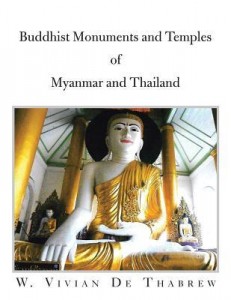Buddhism was almost entirely unknown in western countries until the 19th century. European diplomats and scholars who travelled and lived in Asia collected Buddhist texts to have them translated into English, German and French. Awareness of Buddhism arrived in the United States around the 1840’s when the first Chinese immigrants settled in the western part of the country.
Still, in general Buddhism remained poorly understood in the west until the 1960’s when the first Buddhist teachers started arriving and quickly found thousands of followers – to some degree in harmony with the Hippie movement. However curious westerners without serious study tended to view Buddhism as more of a mystic movement, rather than an encompassing spirituality involving meditation.
Buddhism gained more popularity across Western culture by the end of the 20th century, when celebrities and other well-known people like Steve Jobs, Richard Gere or Phil Jackson openly talked about the positive influence Buddhism has had on their lives.

Today Buddhism in the west comprises not only teachers or monks from countries like Thailand, Cambodia or Laos, but also many natives who have converted to Buddhism. Beside the traditional schools of Buddhism that include Zen, Theravadin and Vajrayana, there are now courses in Buddhism at both universities and high schools.
Why Buddhism?
To many Westerners, Buddhism is considered more a way of life rather than a religion. Or better, a state of mind; its ethics become very important and valued especially in today’s modern and busy times, as more and more people looking for ways to overcome stress and anxiety through meditation, but also to let go from materialism and to start living a meaningful live by helping others and to be free from guilt.
Another important aspect is that people in the west are most familiar with Christianity, Judaism and Islam, all depending on god as the creator, whereas Buddhism focuses entirely on humanity and self-development/transformation. Hence, for many people it is a substantially different challenge to conceive that they can be in control of their own destinies and state of mind.
Largest Buddhist temples & stupas in the west:
Nan Tien Temple – the largest temple in Australia
180 Berkeley Road
Berkely
New South Wales 2506
Australia
www.nantien.org.au
Nan Tien Temple literally means “Southern Heaven Temple” and is widely considered as the largest Buddhist temple in the southern hemisphere. It was built by the Fo Guang Shan order a branch of the Mahayana Buddhists, with origins in Taiwan.

Hsi Lai Temple – The largest temple in the United States
3456 Glenmark Drive
Hacienda Heights, California
United States
www.hsilai.org
The temple opened its doors in 1988 and mirrors the architecture of typical Chinese buildings. ‘His La’ means “coming to the West” and aims to teach and spread the importance of Buddhism to the western world.
The Enlightenment Stupa in Benalmadena – the largest stupa in Europe
El Retamar
29639 Benalmadena Pueblo
Spain
www.stupabenalmadena.org

Situated at the magnificent Costa del Sol in southern Spain, the Enlightenment stupa is a traditional Tibetan style stupa, which has been inaugurated in 2003 and with a height of 33 metres, it’s the largest stupa in Europe.









